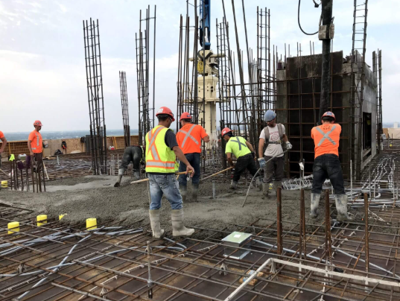
Over 7.8 million people work in the construction industry in the US, as it ranks as the largest market for construction projects. While workers must follow several on-site regulations to limit liability and avoid accidents, casualties happen constantly, but workers have legal recourse during an unfortunate event. The fatal injury rate for the construction industry is higher than the national average for other sectors. Fortunately, construction workers enjoy protection if these dangers result in injuries or fatalities.
Construction projects have picked up speed in New York, particularly in Garden City. The community is characterized by its well-established neighborhoods, beautiful homes, and suburban atmosphere. Recently, construction projects happening within the town, such as renovations, residential expansions, or small-scale commercial developments, have changed the landscape. However, with more projects flowing into the city, the chances of an accident increase.
In such troubling times, a construction injury lawyer can help you navigate the legal aspects of these dangers in the construction industry. The following dives into some of the pitfalls of working in the construction industry and how a lawyer can help.
Slips, Trips, and Falls
Construction sites have uneven terrains, unused materials on site, and buildings at varying stages of completion. It is no wonder that slips and falls are common hazards of working in this environment. 20% of injuries in a workplace are connected to slips and falls.
Most of these hazards can be avoided by effectively maintaining working areas and access routes. Causes of slips and falls include:
- Uneven surfaces
- Obstacles
- Trailing cables
- Wet or slippery surfaces.
Slips and falls cause major and minor injuries such as:
- Fractures
- Lacerations
- Abrasions
- Bruises, etc.
While you may be trained to avoid slips and falls and comply with workplace safety standards, the risk isn’t always eliminated. A slip and fall lawyer can help you determine liability in cases where slips and falls may not have been entirely your fault but happened and resulted in injuries, loss, or fatality.
Working at Height
Construction workers working on tall buildings are at an increased risk of falls. Falling from heights can automatically result in severe head, bones, spinal injuries, or even death.
Training is mandatory for employees working at height on construction sites. As an employee, you must be trained in working on different equipment and surfaces, such as safe working on roofs, ladders, and scaffolds.
Employers must assess the risks associated with working at heights. Subsequently, they should devise a plan to ensure employees carry out work safely.
Failure to provide training and safety features for construction workers for working at heights exposes employees to further hazards. Employers may be liable if their negligence contributed to injuries or accidents such as falls.
Airborne and Material Exposure
Employees in the construction industry face multiple respiratory hazards and may interact with toxic chemicals. Such dangerous materials may include:
Asbestos
Asbestos enters the body when construction workers ingest contaminated airborne particles. Construction workers renovating older structures are at an increased risk of inhaling asbestos since modern construction products don’t contain as much asbestos as before. In such cases, individuals may consider pursuing a mesothelioma lawsuit to seek legal recourse for asbestos-related health complications. Health dangers of exposure to asbestos include
- Gastrointestinal cancer
- Mesothelioma
- Lung cancer
- Emphysema, etc.
- Lead
You may ingest lead when inhaling lead-contaminated dust, mist, or fumes. Lead may be present in roofs, electrical conduits, tank linings, cornices, etc., and repeated exposure may result in irreversible system and organ damage.
Cadmium
Construction workers may be exposed to cadmium when breathing contaminated dust, mist, or fume or absorbing it via skin contact. Cadmium exposure may cause cancer and reproductive, neurological, gastrointestinal, renal, cardiovascular, and respiratory issues.
In addition, exposure to materials like silica dust and chemical products may also present additional hazards on the job. Employers must provide workers with PPEs to shield them from these airborne and material exposure hazards.
Hand Arm Vibration Syndrome (HAVS)
HAVS is a painful condition affecting the joints, nerves, and blood vessels. The extended usage of hand-held power tools such as ground working equipment and power tools commonly causes it.
While HAVS is preventable, the damage is permanent. On the bright side, construction workers who develop a permanent impairment due to work-related HAVS are entitled to non-economic loss benefits based on the degree of the impairment.
What Should You Do if You’re Exposed to These Dangers?
You may be entitled to compensation and benefits if you’ve suffered harm from exposure to these dangers of working in the construction industry. Consult a lawyer who specializes in the domain to help you process the restitution claims.



(0) comments
We welcome your comments
Log In
Post a comment as Guest
Keep it Clean. Please avoid obscene, vulgar, lewd, racist or sexually-oriented language.
PLEASE TURN OFF YOUR CAPS LOCK.
Don't Threaten. Threats of harming another person will not be tolerated.
Be Truthful. Don't knowingly lie about anyone or anything.
Be Nice. No racism, sexism or any sort of -ism that is degrading to another person.
Be Proactive. Use the 'Report' link on each comment to let us know of abusive posts.
Share with Us. We'd love to hear eyewitness accounts, the history behind an article.